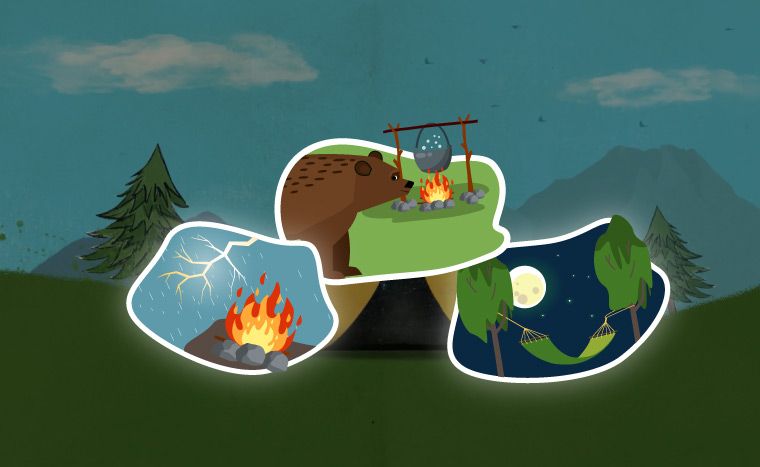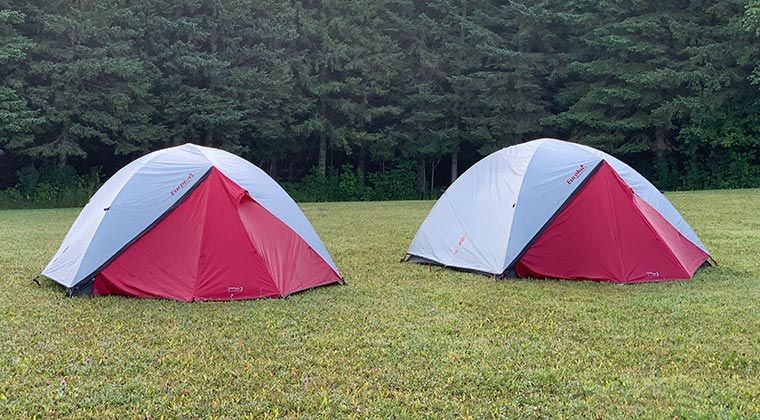CALL SCOUTS CANADA FOR TIPS TO QUELL YOUR CAMPING CALAMITIES
In honour of the upcoming epic Canadian camping season, Scouts Canada (the country’s leading co-ed youth organization), is ‘going to the phones’ to help outdoor-challenged Canadians navigate common camping calamities. Starting May 1st, expert advice on the ten top camping conundrums will be available for free, 24/7, when calling Scouts Canada’s ‘Camptastic’ Helpline at 1-844-SCOUT101.
For Bell Canada customers, please dial 1-844-SCOUT10 to access the Camptastic Helpline.
Research from Statistics Canada shows that the majority of youth in Canada, aged 12-17, don’t get enough physical activity in a day, while an impact study from World Scouting found that Scouts are 18% more physically active than their peers, leading to greater independence and the ability to take on responsibility.
When youth stay active and connect with nature, they experience a world of opportunities to develop resiliency, adaptability and confidence. By embracing new experiences and overcoming fun challenges, Scouts realize their capabilities and discover skills that set them up for success—in the great outdoors and in life.
That’s why Scouts Canada wants to help even more Canadian youth and their families experience the benefits of getting outside this camping season.
“As nature lovers and outdoor enthusiasts, Scouters live for camping, but we recognize that many Canadians may hesitate to benefit from the camping experience due to rusty skills or a lack of confidence,” said Mike Eybel, a volunteer Scouter of nine years with Scouts Canada. “A 24/7 helpline was the quickest, most practical and easiest way for us to support Canadians this camping season, wherever they’re at and whenever they need.”
WHY A CALL-IN PHONE LINE?
While Scouts Canada is all about ‘being prepared’ and planning ahead to anticipate challenges, this call-in line is designed for campers who are caught in a pinch, already at campsites and struggling with common camping concerns.
Confused Canadian campers will be able to call in, use simple number selections, and be directed to pre-recorded solutions from real Scouts and volunteer Scouters, to get advice for trending campsite concerns, like “What’s a thunderbox?”, or “The tent pole snapped…SOS”.
Camptastic Helpline
Call 1-844-SCOUT101
(For Bell Canada customers, please dial 1-844-SCOUT10 to access the Camptastic Helpline.)
For emergencies and serious mishaps while camping, call emergency services immediately.
Counting Down Canadas’ Top Camping Conundrums
1. Wild, Wild, Life

Mountain lions, wolf packs and bears, oh my!
When it comes to experiencing the benefits of nature in Canada, wildlife come with the territory. Adventure with confidence in the great outdoors with these tips!
Tips on Preventing Wildlife Encounters
- It’s important to pay attention to your surroundings and stay alert. What wildlife—whether small or large—call the area you’re exploring, home? If you notice tracks, scat, strange smells or disturbed vegetation, pay attention as there may be wildlife in the area. Keeping bear spray on hand and easily accessible is a good idea for bear-traffic regions.
- Also, be sure to make noise on the trail. Call, sing, clap or talk loudly while on the move, to let local wildlife know you’re there and avoid surprising them.
- While adventuring, go in numbers, stay together and keep to officially marked trails. Be mindful of the time of day or night that wildlife are more active in the area and don’t let kids wander off. For our furry little friends who tag along, keep pets on leash at all times, as they can get distracted and dash off to follow another animal’s scent, or they can provoke defensive wildlife reactions if an encounter does take place.
- Lastly, make sure that you keep a clean campsite. Litter and food scraps are notorious culprits for attracting unwelcome guests!
What to do if you come across wildlife.
- Before embarking on your activity or camping adventure, be sure to research local wildlife in advance so you know what to do for each unique animal encounter. Responding to a bear is very different to reacting to a moose.
- Here are some general rules of thumb to keep in mind:
- Keep your distance and don’t try to pat, feed or get in for a selfie with the animals. Yes, they’re awesome creatures but they’re also in their wild element, so let’s respect their space.
- For large vegetarians like deer, moose or elk, keep a minimum of distance of 30 metres, or 3 buses’ worth of space. For wildlife like bears, wolves, coyotes or cougars, keep a distance of 100 metres at least—that’s a safe 10 buses’ worth of length.
- Never turn your back on wildlife. Stay calm and slowly back away while speaking in a soft voice to make your presence known. Avoid eye contact if it’s a bear; maintain strong eye contact if it’s a wolf or cougar.
If the animal continues approaching, make yourself look as large as possible, wave your arms and make loud, disruptive noises.
While wolf and cougar encounters are rare, if you are faced with one that won’t back down, keep your eyes on theirs and respond aggressively: show your teeth, make loud noises, and through sticks or rocks if it continues approaching. - Always carry bear spray and know how to use it.
2. Bear Necessities

Whether it’s keeping your food safe from little scavengers like racoons, mice, and squirrels, or if you want to avoid attracting larger wildlife like bears, you’ll want to follow these quick tips.
If your campsite does not offer food lockers and you are not at a drive-in campsite where food can be stored in your vehicle, then store your food, garbage and all scented items at least 61 metres away from your tent and cooking areas.
Barrel/Canister Method
If you’re camping in an area with minimal to no trees, the barrel or canister method will be your best bet for sheltering your food.
Place the open canister on a flat area 61 metres away from your campsite, upside down. Do not place it on a ledge or near water where a bear’s swatting could send your barrel flying away. Keep it away from large rocks or roots that a bear could leverage to crush the cannister against, using its bodyweight.
Bear Bagging
if you’ll be in an area with trees, as bear bagging will be the right approach for your campsite.
You’ll need 15-30 metres of rope, 2 carabiners and a stuff sack for a proper bear hang.
Single Branch Method:
- For the single branch method, your bag should hang on a tree limb that is nearly 5 metres above the ground and 3 metres away from the trunk.
- Securely tie one end of your rope to a small rock, or sock filled with gravel. Throw this over the intended branch and give enough slack so that it lowers back to the ground on the other side of the branch.
- Untie the rock or gravel sock and use a carabiner to attach the bear bag to the rope.
- Holding the opposite end of the rope, hoist the bag up to a minimum of 5 metres above ground and 3 metres away from the trunk.
- Tie off the rope on another strong tree trunk as your anchor
Two-Tree Hang:
- Find two trees that are 6 metres apart in an area distanced from your campsite.
- Securely tie one end of your rope to a small rock, or sock filled with gravel. Throw this over a branch and let it fall to the ground on the opposite side, then loop it around the trunk. Tie off the loose end of the rope to the tree trunk.
- Carry the weighted end of the rope to the other tree, allowing for slack, and throw it over a branch so that it falls to the ground. Loop it around the trunk but do not tie off yet. There should still be lots of loose rope on the ground between the two trees.
- Using a carabiner, attach your bear bag to the mid-section of your rope.
- Return to the loose end of your rope and remove the rock or sock. Pull this end to hoist the bear bag at least 5 metres above ground, then tie off the rope on the tree trunk.
Storing Food Safely on Your Campsite:
Avoid attracting wildlife or losing your food supply to small critters or weather exposure.
- Separate your tent, cooking, food storage and food washing areas with at least 61 metres’ distance. Secure your food, garbage and scented items using a barrel or canister method, or a bear hang method.
- Make sure your food containers are waterproof and resilient, like dry sacks, barrels or cannisters.
- For food scraps and waste, seal and pack your food in a storage container and bring it home for disposal.
- Grey water, which can include grease, food waste or biodegradable cleaning products, should be buried at least 20 centimetres deep and 30 metres from camp and water sources. It can also be disposed of in a toilet, outhouse or carried it 61 metres away from the campsite and natural water sources, and scattered widely.
- Remember, DO NOT bury scraps or garbage as it can attract wildlife.
3. It’s like ‘ra-aaa-ain’ on your camping day

Sure it’s ironic if a storm is raining on your (camping) day.
From setting up camp in the rain, to getting dry if soaked, to starting a campfire with wet wood, we’ve got tips to help you enjoy the outdoors—rain or shine!
Remember to always check the weather many times before leaving for your camp trip. Severe weather is not worth the safety risk.
Setting up camp in the rain.
Always pack at least two tarps for your camp—one as extra coverage for your tent, the other to shelter your eating area.
- Find high, level ground to set your tent, but start by setting up your tarp. It should be tied tight to avoid flapping in the wind and at an angle for water run-off.
- Next, when setting up your tent, secure the fly with pegs further away from the tent, enough to keep the fly taut so that the water runs off and away from the base of your tent.
- When taking down camp, be sure to dry out all your tent gear and tarps before packing, to prevent mold. If you must pack up in the rain, don’t forget to dry items out when you get home.
Drying off rain-soaked gear.
- Sun-dry items when the rain stops.
- Fire can be used to dry items, but it is risky (rogue sparks) and can’t be left unattended.
- Hang a clothesline beneath your tarp.
Starting a campfire in wet conditions, in areas with no local fire restrictions.
- Clear ground space of wet debris
- Build a floor for the fire using a layer of sticks to elevate the fire from the wet ground.
- Use sticks to build a lean-to or A-frame style structure on your floor, using rocks or logs for the sticks to lean on.
- Add a “roof” with progressively larger twigs and sticks to shelter your fire, leaving a fire ‘entrance’ to insert dry tinder into the structure.
- Light tinder or firestarter and continue adding to the roof as the fire catches.
- DO NOT use a stove in your tent or build a fire beneath a tarp as these are hazardous.
4. Gimme Shelter – tactical tent tips

Whether sleeping in a hammock between trees, cozy in a tent or in a sleeping bag near the fire, Scouts has tips and hacks for a perfect night outdoors.
If you have damaged tent poles, need to make a tent repair in the field or want tips for sleeping beneath the stars, Scouts has you covered!
Is part of your tent damaged?
These tips will keep you camping, so you don’t have to cut your trip short.
Damaged tent pole
- Slide the pole sleeve over the broken tent pole section so that it’s centred over the break.
- Use duct tape to secure the sleeve.
- If you don’t have a pole sleeve, cut a strip from aluminum to wrap around the sleeve and secure it with tape.
- Be sure to replace the tent poles when you get home.
Patching a hole in your tent.
- Clean the fabric around the tear using rubbing alcohol.
- Cut a piece of repair tape to cover the hole, leaving at least one inch of fabric surrounding it.
- Lay the tent fabric on a solid surface, remove the backing on the tape patch and press it into place.
- Add an interior patch if needed if the tear is in a high-tension area.
- Let the patch cure for a day before packing the tent away.
Sleeping beneath the stars without a tent?
If you’re sleeping in a hammock, hang it with slack; this lowers the center of gravity, making it more stable so there’s no chance of falling out. Sleep diagonally so that your body is flat across the fabric with your foot end raised 8-10 inches higher to keep your heavier torso from sliding to one side. Don’t forget a sleeping pad and bug net!
If you’re sleeping on a bivouac bag or tarp, make sure they’re waterproof and find level, wind-protected ground that’s not near any drop-offs. Remember to be prepared for the weather and are ensure safety as a priority.
Reasons Why We Recommend the Mackenzie 4 Scout Tent:
5. Don’t be a Crappy Camper

What to do with an outhouse, thunderbox, or hole in the ground approach
Depending on your campsite location, you may have a full-facility washroom, or you’ll be getting close and personal with nature using other approaches. Scouts has tips to keep in mind for responsible and workable waste disposal.
Depending on your campsite location, you may have a full-facility washroom, or you’ll be getting close and personal with nature using other approaches.
For backcountry campers, you’ll likely have an outhouse or thunderbox on site—a thunder box is basically a wooden box for you to sit on instead of a toilet. You can take in the views of nature as you answer it’s call and make your deposit, but remember, there’s no door or walls so make sure you let your co-campers know to stay off the thunderbox trail until you’ve announced your return!
Toilet paper (preferably biodegradable) can be thrown into outhouses and thunderboxes, but items like diapers, sanitary napkins and disposable feminine products should be sealed properly and brought home for disposal.
If you’re really out in the wilderness and there are no outhouses or thunderboxes available, the cathole method is your new best friend for solid human waste. Find a spot away from your campsite and slightly off the trail, and dig a hole 6-8 inches deep and 4-6 inches wide.
After doing your business, use a stick to break up contents and mix it with dry leaves and twigs. Leave the stick in the hole. Next, fill the hole with the original dirt you piled up when digging, and disguise it with the plant material in the hole as you bury it.
And lastly, if you forgot toilet paper, fret not! There’s plenty of leaves to help out, but be careful to avoid pesky plants like poison ivy. Remember, “leaves of three, not after you pee”!
6. The ways of water

When drinking water, it’s essential to make sure you’ve purified it for safe consumption—it’s also important to keep natural water sources free from unnatural contaminants when you’re using it to clean things.
Scouts suggests what filter methods to use and how to dispose of greywater waste, responsibly.
There are many ways to filter drinking water for camping.
Water filters catch protozoan cysts and bacteria, while purifiers catch these and viruses. Filter and purifier styles include pumps, squeezable, ‘straw’, gravity reservoirs and tablets (chemical). Find the gear that best suits your needs!
If your only water source is murky, remove debris from the water before filtering it by pouring it into a container through a clean sock or other fabric. You can then filter the debris-free water for a purer end result.
If you forgot your water filtering gear, don’t stress! Simply filter out debris with a clean fabric, and then boil your water for one minute (minimum). This will effectively kill all bacteria and viruses that the water may contain.
Press 1 to return to the main menu or press 2 to learn how to dispose of greywater responsibly.
Whether cleaning dishes, bathing or more, greywater waste can include grease, food waste or cleaning products.
Leave no trace in nature by
- Using biodegradable soap
- Wiping dishes of scraps and food residue before washing them; pack your waste and (cooled) cooking grease in your garbage container to dispose of at home. Remember to seal and store your garbage with food and scented items, using the bear bag or canister methods.
- Dispose of greywater in a toilet, outhouse or carry it 61 metres away from your campsite and natural water sources, and scatter it widely on the ground.
7. ‘Bug Off’ – Crafty ways to keep insects at bay

Can’t we all just get along?
Whether we like it or not, the outdoors is home to a great many creatures aside from us, and it’s their right to frolic in their natural habitat.
We’ve got the buzz on how to live in a buggy environment.
Bug repelling tips
While insects are necessary for ecosystems to thrive, it’s okay to admit they can be annoying little scamps. Good news! You don’t have to like them, but here’s a few tips on how to tolerate them:
- When setting up camp or a rest spot, try to avoid standing water, also known as ‘bug breeding parties’.
- Insect repellant is an obvious choice, with eco-friendly and DEET-free options readily available. Essential oils like mint and citrus are natural deterrents.
- Wearing a bug net, long sleeves and pants are also easy ways to keep your skin protected, along with some citronella candles or campfire smoke. Here’s a little Scout tip—throw sage on the campfire to add an edge to your repellant smoke!
- Another option is an electronic mosquito repellent, or, EMR. These gadgets use heat-activated pads or ultrasonic waves to create a bug-free protection zone for various ranges and duration.
- Depending on your region, be sure to check for ticks often.
Treating bug bites & stings
Bites and stings can happen in the great outdoors, but don’t panic, they’re easy to treat!
- Avoid irritating, scratching or rubbing the affected area.
- Use a cold pack or baking soda mixed with a little water to relieve pain or itching and decrease the reaction.
- For bites or stings that are swollen, red and itchy, take an over-the-counter antihistamine or try calamine lotion.
- If an extreme reaction occurs, including an allergic reaction or signs of infection, seek medical help immediately.
- Severe allergic reaction symptoms can include a sudden rash or hives all over the body' swelling of the throat, mouth, lips, or tongue; trouble breathing; feeling lightheaded, suddenly weak or confused, or even losing consciousness.
- Signs of infection include increased pain, swelling, redness, or warmth around the area; red streaks leading from the area; pus draining from the area; or fever.
Removing ticks and treating the area
- If you find a tick, properly remove it as soon as possible.
- Use fine-tipped tweezers to grasp the tick close to the skin surface
- Pull upward with steady, even pressure. Try not to twist or jerk!
- Clean the bite area and your hands with rubbing alcohol, an iodine scrub, or soap and water.
- Removing a tick within a few hours can help prevent Lyme disease, but not always. It is recommended that if you are bit by a tick that you seek assistance from a healthcare professional.
8. Treading Light-ly

It was all fun and games till the sun set…
There are many ways to light up your night besides the traditional flashlight, headlamp or lantern. Packing solar or battery powered rope or string lights, solar garden lights or battery-powered tea candles are just a few ideas to brighten your campsite!
Forgot your batteries, headlamp, flashlight or lantern? Scouts are here to help!
Being mindful of preserving battery life, use other devices you may have on hand, like the gas flame of a cookstove, flashlight mode of a cellphone or light from a digital watch. These can be used to help you build a fire to create more light, if you are in an area with no local fire restriction.
If you haven’t set items in place before sundown to build a fire, don’t venture out—call it in early and make the most of the daylight tomorrow. Walking around the campsite and surrounding area in the dark is not recommended—too many roots and rocks to navigate safely!
9. First Aid FUNdamentals

Despite being prepared and mindful of our surroundings, sometimes cuts, scrapes and sprains can still happen. For tips on treating basic injuries, Scouts has some basic first aid advice.
For emergencies or serious injuries, you’re going to want to seek medical attention or immediately dial 911.
Blister business, from preventing them to treating them:
- Wear moisture-wicking socks in properly-fitted footwear to prevent blisters, using Vaseline, powder or tape to further protect culprit areas.
- Treat blisters by properly cleaning the blister, then gently puncture and drain it with needle. Use antibiotic and dress the injury with moleskin or a band-aid. The dressing can be reinforced with duct tape for additional protection.
To treat basic scrapes and cuts:
- Stop the bleeding with a clean cloth and gentle pressure.
- Clean the wound and apply an antibiotic.
- Dress wound with a bandage or gauze and tape.
- Continue to monitor the wound for signs of infection, which include: redness, increasing pain, drainage, warmth and swelling.
Feeling the burn?
- Use a clean, cool compress on the burn for 10mins.
- Apply petroleum jelly 2-3 times per day on the burn, and then loosely cover it with a new non-stick, sterile dressing each time.
- Keep the area covered from the sun as it heals.
Strained by a sprain?
For light sprains, place two sturdy sticks on either side of the limb using socks or other fabrics as a buffer cushion to protect the skin. Secure the sticks using rope or shoelaces.
Here’s a little Scout tip: The Scout scarf also doubles as a sling!
10. Up the creek without a paddle

Don’t panic—it’s okay if you’ve lost a paddle or flipped your watercraft, we’ve all been there!
Scouts has reminders for watercraft prep before your adventure, guides for how to correct a flipped vessel and tips for securing items before your trip so that you don’t lose anything in case of a flip.
Be ready for anything.
- Always wear life jackets and bring safety equipment on your adventure, including: a throw bag or buoyant heaving line, a bailer, sound signal, flare, flashlight and a whistle.
- Tie your gear together with a single long rope and carabiners, then secure the rope to the vessel; this will prevent your items from floating away in case of a flip.
- Bring a spare paddle, ALWAYS, and use a paddle leash if you’re worried you’ll drop it. This will keep your paddle from floating away.
- Check the weather beforehand, then check it again. And again.
- In case of a capsize, be sure to practice and perfect your rescue techniques in shallow water before hitting the water.
Righting a capsized canoe
- With your paddle partner, position yourselves in the water on opposite ends of the canoe, facing each other.
- Do strong scissor kicks to heave the canoe up (releasing the water released) and flip it upright.
- While one partner remains in the water holding an and of the canoe stable, the other can hoist themselves back into the canoe on the opposite end.
- Once inside, the partner in the canoe can stay low and maintain balance while the remaining swimmer hoists themselves into the canoe.
Here’s a little Scout tip: When paddling in your canoe, lower your center of gravity for greater stability by paddling in a kneeling position.
Be sure to practice and perfect your rescue techniques in shallow water before hitting the water.
Righting a capsized kayak
- Flip the vessel upright.
- Position yourself at the stern.
- Grab the cockpit combing to hoist yourself up, perpendicular to the kayak.
- Stay low for balance and straddle the kayak with a leg on each side.
- Shift forward until you can drop into the seat. Use paddle for support while your bringing legs back into the kayak.
Be sure to practice and perfect your rescue techniques in shallow water before hitting the water.
About Scouts Canada
Kids and young adults in Scouts chart their own path of discovery. Through a variety of fun experiences with friends, outdoor adventures and contributions to their community, Scouts build resilience and skills that set them up for life. Scouts Canada is the country’s leading co-ed youth organization, offering programming for children and youth aged 5-26 in multiple languages, reflecting Canada’s multicultural landscape and communities. For more information, visit Scouts.ca.
Scouts Canada is a not-for-profit organization (Charitable Registration No.10776 1694 RR0028) and a member of the World Organization of the Scout Movement.
Media Contact:
Patrick McCaully
Pointman News Creation
patrick@pointmannc.com
Pointmannc.com
Camping Cluelessness Media Coverage
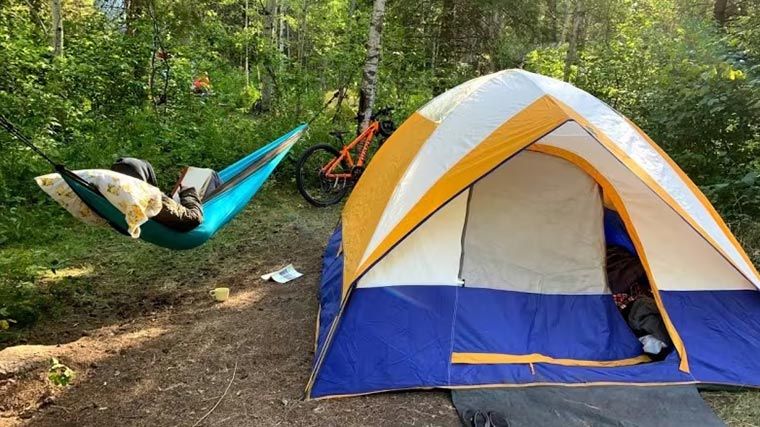
Scouts Canada launches free helpline for all your camping calamities — CBC BC — May 2, 2023
Scouts Canada Says Be Prepared When Camping — Global News Calgary — May 7, 2023
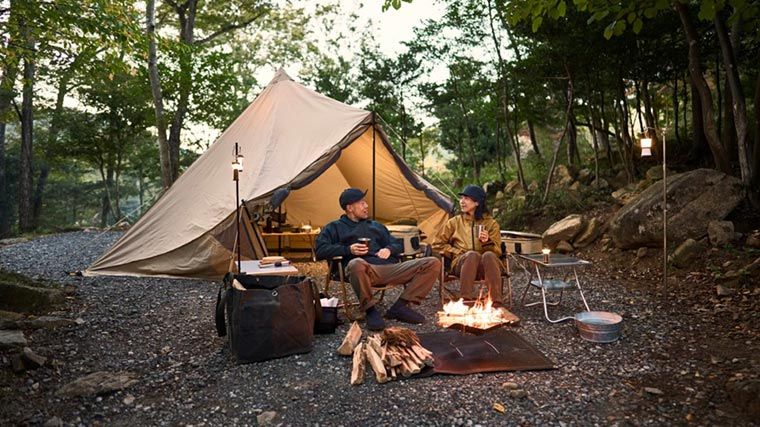
Rusty skills? No problem! Scouts Canada to the rescue! — Sasktoday.ca — May 5, 2023
Ask an Expert: Helpline gets inexperienced campers prepared — Global News Calgary — May 7, 2023
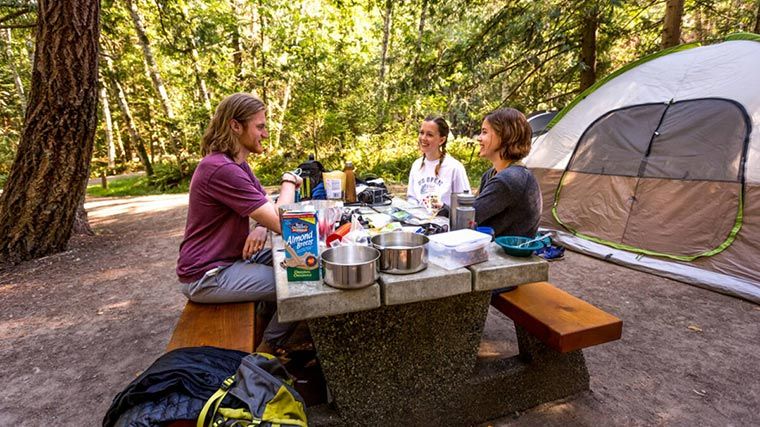
Hotline helps Canadian camping newbs with the scoop on poop and other questions — vicnews.com — May 3, 2023
